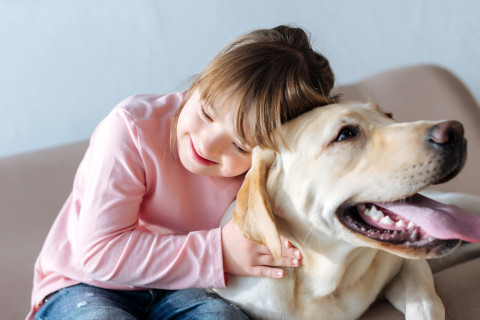Homes with dogs have considerably richer and more diverse bacterial microbiota - i.e. the bacterial communities in our homes - than homes without a dog. This was observed in a recent study published in Scientific Reports.
Allergens, hair and microbes are released into the indoor air from the dog. However, they also bring soil and other microbe-rich particulate matter from outside into the home in their fur and on their paws.
‘The bacterial richness was greater in samples of house dust taken when the ground was free of snow than in those taken when there was snow cover, demonstrating this transfer of microbe-rich outdoor material indoors. In previous studies, the diversity of the bacteria in the home has been associated with a reduced risk of asthma and allergies,’ says Anne Karvonen, Senior Researcher at THL.
Another reason for the increase in bacterial taxa in homes with dogs are bacteria that origin from the dog's own microbiota, from places such as the dog's nose, skin, mouth, and gastrointestinal tract. Compared to bacteria, the dog's impact on the fungal microbial ecosystem of the home, i.e. yeasts and moulds, was lower.
‘In the future, we plan to ascertain if these specific bacteria linked with dogs in the home protect children from early childhood infections of the upper respiratory tract. If this is the case, we would be able to modify the indoor microbiota of homes in a direction that promotes health,’ says paediatrician Jenni Mäki, a visiting researcher at THL.
The study involved analysis of microbes in dust inside Finnish homes in suburban and sparsely populated areas (LUKAS study, a total of 182 homes) and in German urban homes (LISA study, a total of 284 homes). About one in three of the Finnish homes in the study had a dog (31 %). Much fewer German homes had dogs (6 %).
Several factors other than a pet affect the microbiota in a home, such as for example the number of residents, the surrounding living environment (urban or rural area), indoor use of firewood and building related factors such as age, type of ventilation and water damage in the home. This study focused on examining how a dog affects the indoor microbiota. The Finnish Institute for Health and Welfare, Kuopio University Hospital and the University of Eastern Finland participated in the study in Finland.
Reference:
Mäki JM, Kirjavainen PV, Täubel M, Piippo-Savolainen E, Backman K, Hyvärinen A, Tuoresmäki P, Jayaprakash B, Heinrich J, Herberth G, Standl M, Pekkanen J, Karvonen AM. Associations between dog keeping and indoor dust microbiota. Scientific Reports. 2021.
https://www.nature.com/articles/s41598-021-84790-w
More information:
Jenni Mäki
Visiting researcher, paediatrician,
THL, Kuopio University Hospital
firstname.lastname(at)kuh.fi
Anne Karvonen
Senior Researcher
THL
firstname.lastname(at)thl.fi



